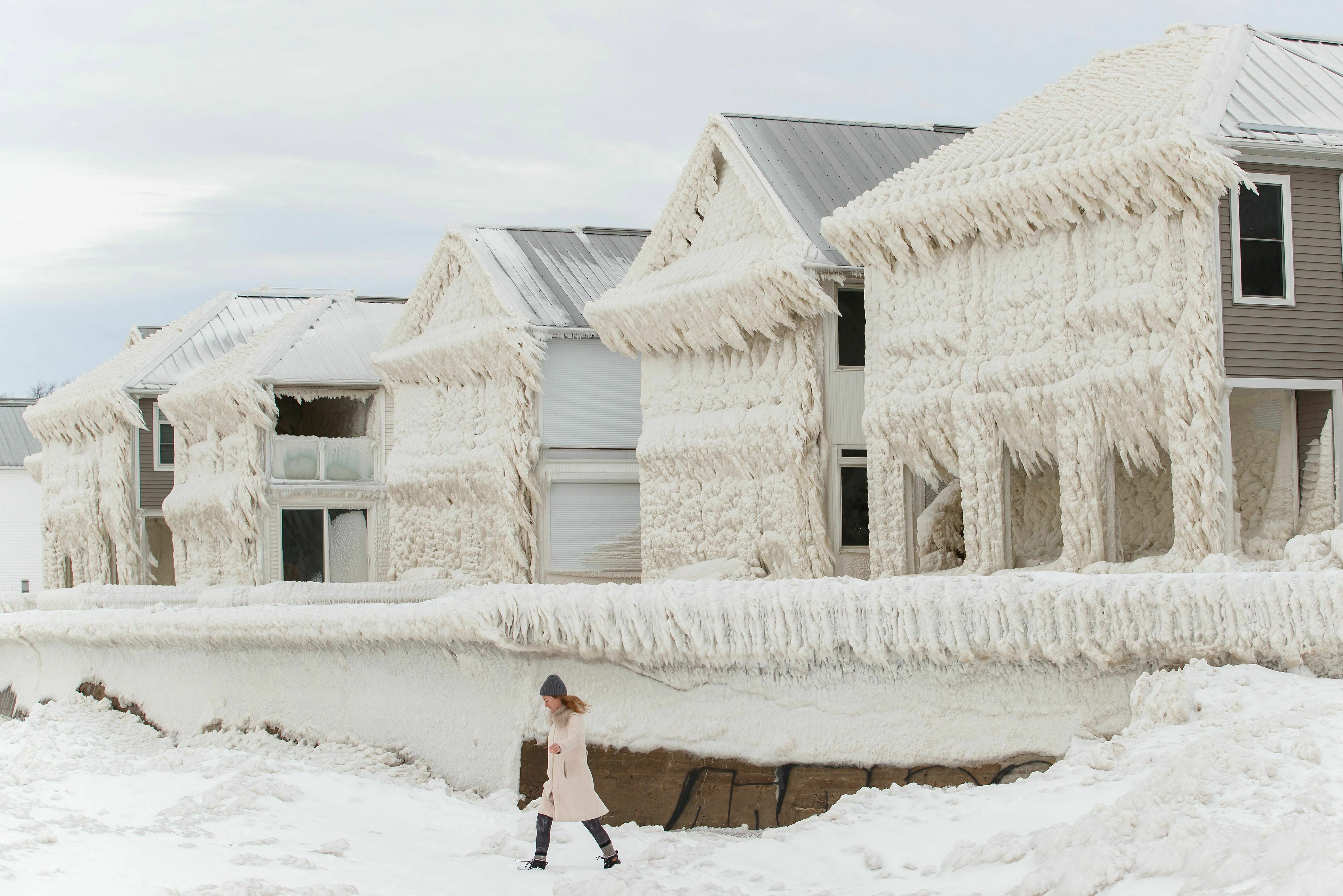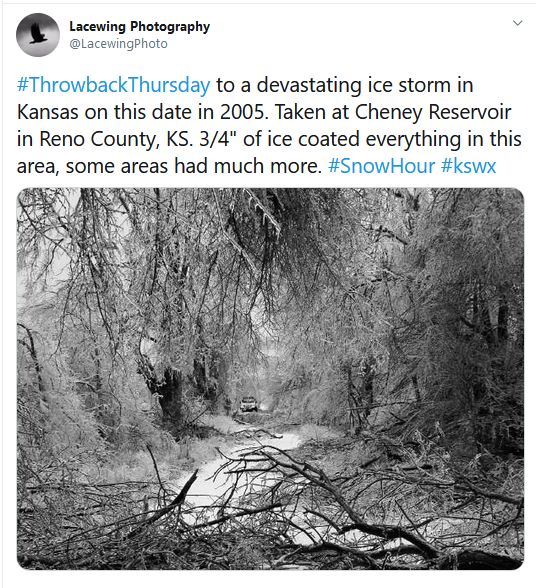Topic ice storm: Explore the chilling beauty and hidden dangers of ice storms, natural phenomena that transform landscapes into winter wonderlands while posing serious challenges.
Table of Content
- What are the common impacts of an ice storm?
- What is an Ice Storm and Its Impact
- Causes and Conditions Leading to Ice Storms
- Historical Examples of Severe Ice Storms
- Health and Safety Risks During Ice Storms
- Preventing and Mitigating Damage from Ice Storms
- Emergency Response and Recovery Efforts
- YOUTUBE: Sounds for Sleeping - Ice Storm - 11 Hours - All Dark Screen - Sleet and Freezing Rain Ambiance
- Long-Term Effects and Recovery from Ice Storms
- Community and Government Roles in Ice Storm Preparedness
- Technological Advances and Research in Ice Storm Prediction
- Case Studies: Effective Ice Storm Management
What are the common impacts of an ice storm?
Common impacts of an ice storm include:
- Heavy accumulations of ice can bring down trees and topple utility poles and communication towers.
- Disruption of communication systems and power outages.
- Dangerous road conditions leading to accidents and travel disruptions.
- Weight of the ice can damage buildings and structures.
- Icy surfaces increase the risk of slips and falls.
- Icy conditions can lead to school and business closures.
- Loss of crops due to freezing temperatures.
READ MORE:
What is an Ice Storm and Its Impact
An ice storm, a striking meteorological phenomenon, occurs when freezing rain creates a glaze of ice on everything it touches. Unlike snowstorms, where snowflakes accumulate softly, ice storms coat trees, roads, and power lines with a heavy, often destructive, layer of ice. The impact of these storms can be both mesmerizing and perilous, transforming landscapes into glistening winter scenes while posing significant challenges to affected communities.
- Infrastructure Damage: The weight of the ice can cause trees and utility poles to snap, leading to widespread power outages and blocking roads.
- Travel Hazards: Roads and walkways become dangerously slick, significantly increasing the risk of accidents for pedestrians and motorists alike.
- Community and Economic Impact: Schools and businesses may close, and the cost of cleanup and repair can run into millions, impacting local economies.
- Environmental Effects: The heavy ice can damage ecosystems, breaking branches or even uprooting trees, affecting local wildlife habitats.
The beauty of ice storms belies their potential for disruption and damage, highlighting the need for preparedness and resilience in the face of such natural events.
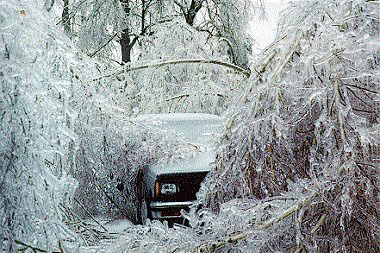
Causes and Conditions Leading to Ice Storms
Ice storms, a captivating yet hazardous winter phenomenon, are the result of specific atmospheric conditions. Understanding these can help us better prepare for their impact. Here"s what leads to the formation of ice storms:
- Temperature Layering: Ice storms occur when warm air overlays a layer of cold air at the surface. Precipitation falls through the warm layer, melting into rain, then freezes upon hitting the sub-freezing surface layer.
- Source of Moisture: A supply of moisture from a body of water or moist air mass is essential, allowing the storm to draw upon this moisture and convert it to freezing rain.
- Geographical Influence: Certain regions are more prone to ice storms due to their geographical location, particularly areas where cold and warm air masses frequently collide.
- Seasonal Timing: While they can occur in late fall or early spring, the most severe ice storms typically happen in the winter months when temperature gradients are more pronounced.
These conditions combined create the perfect storm for ice accumulation, leading to the beautiful yet dangerous coating of ice over everything it touches. Awareness and understanding of these factors are crucial for effective preparedness and response strategies.
Historical Examples of Severe Ice Storms
Ice storms have left a significant mark on history, causing widespread damage and affecting millions. Here are some notable instances:
- January 1998 North American Ice Storm: One of the most devastating ice storms in history, it affected parts of Canada and the northeastern United States, leading to massive power outages, extensive damage to trees and infrastructure, and significant economic losses.
- December 2013 North American Ice Storm: This storm hit parts of the northeastern US and southeastern Canada, causing widespread power outages and leading to several deaths.
- 2009 Ice Storm: Spanning from the Southern Plains to the Ohio Valley, this severe weather event left millions without power and was declared a major disaster in several states.
- Great Ice Storm of 1922: A historic storm that struck the United States" East Coast, particularly affecting the Washington, D.C. area with significant ice accumulation, damage to trees, and power outages.
These events underscore the powerful impact of ice storms and the importance of preparedness and resilience in the face of such natural disasters.
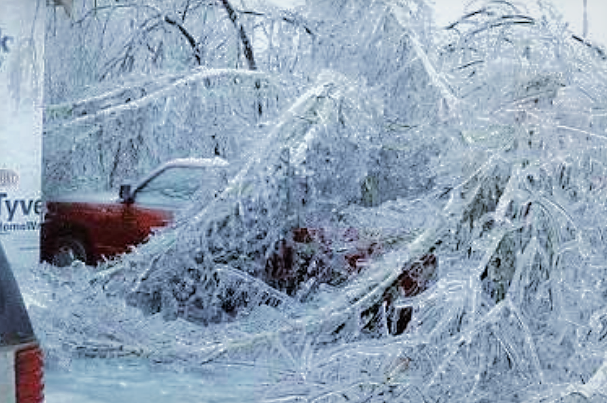
Health and Safety Risks During Ice Storms
Ice storms bring not just a serene beauty to landscapes but also a host of health and safety risks that require attention and preparation. Awareness of these risks can significantly mitigate their impact:
- Slip and Fall Injuries: Ice-covered surfaces are treacherously slippery, leading to falls that can cause serious injuries, including fractures and concussions.
- Hypothermia and Frostbite: The extreme cold, especially during power outages when heating systems may fail, increases the risk of hypothermia and frostbite among those without adequate warmth.
- Carbon Monoxide Poisoning: The use of alternative heating sources like generators, grills, and camp stoves indoors can lead to carbon monoxide (CO) poisoning, a dangerous and potentially fatal risk.
- Vehicle Accidents: Driving on ice-slicked roads increases the likelihood of accidents due to decreased vehicle control and stopping distance.
- Heart Stress: The exertion of shoveling snow and ice can put undue stress on the heart, particularly in individuals with pre-existing heart conditions.
- Power and Utility Outages: Extended power outages can affect water supply, heating, and access to medical help, posing significant health risks, especially for the vulnerable and elderly.
Preparation, such as having emergency supplies, a plan for alternative heating, and knowledge of first aid, can greatly reduce these risks and ensure safety during ice storms.
Preventing and Mitigating Damage from Ice Storms
While ice storms are natural events that cannot be prevented, their impact on our homes, communities, and safety can be significantly mitigated with careful preparation and proactive measures:
- Tree Maintenance: Regular pruning and removal of dead or vulnerable branches can reduce the risk of damage to property and power lines from falling limbs.
- Emergency Kits: Keeping well-stocked emergency kits with supplies such as water, non-perishable food, flashlights, and first-aid materials ensures readiness for power outages.
- Alternative Heating Sources: Having safe, alternative heating options available, along with carbon monoxide detectors, can keep homes warm safely during power outages.
- Insulating Pipes: To prevent freezing and bursting, pipes can be insulated, and letting faucets drip slightly during cold spells can keep water moving.
- Vehicle Preparedness: Equipping vehicles with winter tires, chains, and emergency supplies can improve safety during essential travel.
- Community and Neighborhood Plans: Working together with local communities to establish communication plans and check on vulnerable neighbors can enhance collective resilience.
- Infrastructure Resilience: For utilities and municipalities, investing in infrastructure resilience, such as burying power lines and improving stormwater management, can reduce the long-term impact of ice storms.
By taking these steps, individuals, families, and communities can better protect themselves and their property from the severe effects of ice storms.

Emergency Response and Recovery Efforts
In the aftermath of an ice storm, prompt and coordinated emergency response and recovery efforts are crucial to restore normalcy and support affected communities. These efforts involve multiple steps and collaboration among various stakeholders:
- Rapid Damage Assessment: Initial assessments by emergency services to determine the extent of the damage and prioritize areas in need of immediate assistance.
- Restoration of Power and Utilities: Utilities companies prioritize the restoration of services, with emergency generators provided to critical facilities such as hospitals and shelters.
- Clearing Roads and Public Spaces: Removal of ice, snow, and debris from roads, sidewalks, and public areas to ensure safe passage and access for emergency and recovery vehicles.
- Emergency Shelters and Support Centers: Establishment of shelters and support centers to provide refuge and necessities to those displaced or affected by the storm.
- Public Communication and Safety Information: Regular updates and safety information disseminated through various media to keep the public informed and safe.
- Healthcare and Emergency Medical Services: Provision of medical care and services to address injuries, hypothermia, carbon monoxide poisoning, and other health issues arising from the storm.
- Community and Volunteer Mobilization: Engagement of community groups and volunteers in recovery efforts, providing assistance to vulnerable populations and aiding in cleanup activities.
- Long-Term Recovery Planning: Development of strategies for rebuilding and strengthening resilience against future ice storms, including infrastructure improvements and public awareness campaigns.
These efforts underscore the importance of preparedness, collaboration, and community resilience in facing the challenges posed by ice storms and other severe weather events.
Sounds for Sleeping - Ice Storm - 11 Hours - All Dark Screen - Sleet and Freezing Rain Ambiance
Relaxation: Need a break from the hustle and bustle of everyday life? Dive into this calming video that will transport you to a world of serenity and relaxation. Let your worries melt away as you unwind and rejuvenate your mind, body, and soul. Hazard: Curious about the dangers lurking around us? Watch this informative video to learn about potential hazards in your environment and how to stay safe. Gain valuable insights and tips on how to protect yourself and your loved ones from unseen dangers.
Ice Storm Causes Dangerous Commute for Millions Across Midwest and South
Eleven states are under an ice alert as a bitter cold sweeps across much of the country. Subscribe to ABC News on YouTube: ...
Long-Term Effects and Recovery from Ice Storms
The aftermath of an ice storm can have lasting effects on communities, ecosystems, and infrastructure. Recovery is often a long-term process, involving several critical steps:
- Infrastructure Repair and Rebuilding: The repair of damaged infrastructure, including power lines, roads, and buildings, can take months or even years, requiring significant resources and coordination.
- Environmental Recovery: Natural areas may need years to recover from the damage. Efforts may include replanting trees and restoring habitats to support wildlife.
- Economic Impact: Ice storms can have a profound economic impact, from immediate costs related to emergency response and damage repair to longer-term effects on businesses, agriculture, and local economies.
- Community Resilience Building: Communities often strengthen their emergency preparedness, improve communication systems, and build resilience against future weather events as part of the recovery process.
- Mental Health Support: The psychological impact on affected individuals can be significant. Providing mental health support and community support services is an essential component of recovery.
- Policy and Planning Improvements: Lessons learned from ice storms can lead to changes in policies, building codes, and planning strategies to mitigate the impact of future events.
Recovery from ice storms underscores the importance of community resilience, adaptive management, and the need for proactive planning to mitigate the impacts of similar events in the future.
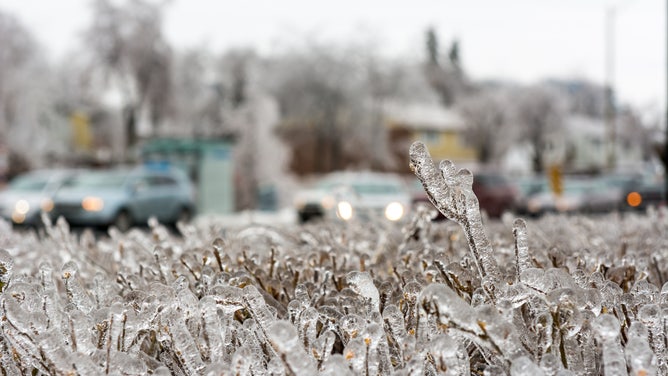
Community and Government Roles in Ice Storm Preparedness
Effective preparation for ice storms involves both community engagement and government action. Working together, they can significantly reduce the risks associated with these severe weather events. Here are key roles each plays:
- Government Initiatives:
- Developing and disseminating emergency preparedness plans that include guidelines for ice storms.
- Conducting public education campaigns on how to prepare for and respond to ice storms.
- Investing in infrastructure improvements to make power lines, roads, and public buildings more resistant to ice storm damage.
- Coordinating with utility companies to ensure rapid response capabilities for restoring services.
- Community Actions:
- Forming neighborhood support networks to check on and assist vulnerable residents during and after ice storms.
- Organizing local emergency preparedness workshops and training sessions.
- Participating in community-wide emergency drills.
- Implementing local initiatives, such as tree-trimming programs, to reduce the risk of damage.
Both community and government have critical roles in preparing for ice storms. By combining resources and efforts, they can enhance safety, minimize damage, and speed up recovery times following these challenging weather events.
Technological Advances and Research in Ice Storm Prediction
Advancements in technology and research have significantly improved our ability to predict and prepare for ice storms. These developments not only enhance forecasting accuracy but also aid in minimizing the impact of these severe weather events:
- Improved Forecasting Models: Enhanced computer models now integrate vast amounts of meteorological data, offering more accurate and timely predictions of ice storm occurrences and intensities.
- Satellite Technology: The latest satellite technology provides real-time data on cloud formations and temperature gradients, critical factors in ice storm development.
- Radar Systems: Advanced radar systems, such as Doppler radar, allow meteorologists to track precipitation and temperature changes more precisely, improving ice storm warnings.
- Research on Atmospheric Conditions: Ongoing research into the atmospheric conditions that lead to ice storms helps scientists understand the complex processes involved, leading to better predictive capabilities.
- Public Warning Systems: Enhanced public warning systems, including mobile alerts and social media, ensure that individuals and communities receive timely information about impending ice storms.
These technological and research advancements play a vital role in safeguarding communities, allowing for more effective preparation and response strategies to mitigate the effects of ice storms.

READ MORE:
Case Studies: Effective Ice Storm Management
Examining past ice storms and their management can provide valuable insights into best practices and strategies for mitigating the impact of these severe weather events. Here are several case studies highlighting effective ice storm management:
- The Great Ice Storm of 1998 in Eastern Canada and the Northeastern United States: This case study illustrates the importance of cross-border cooperation and the effectiveness of emergency preparedness plans. Utilities companies from unaffected regions provided essential support, helping to restore power more quickly.
- The 2009 Ice Storm in Kentucky, USA: This event underscores the value of community resilience and the effectiveness of public communication strategies. The state"s comprehensive response, including the establishment of emergency shelters and the mobilization of the National Guard, facilitated a more efficient recovery.
- The December 2013 Ice Storm in Toronto, Canada: This case study highlights the need for robust urban forestry management and the benefits of investing in infrastructure resilience. Following the storm, Toronto implemented significant improvements to its emergency response plans and infrastructure to better withstand future ice storms.
These case studies demonstrate that through prepared planning, effective communication, and community engagement, the adverse effects of ice storms can be significantly reduced, showcasing the importance of learning from past events to improve future responses.
Embracing the challenge of ice storms with informed preparation and resilience transforms adversity into a testament to community strength and technological advancement, illuminating the path to a safer, more prepared future.






